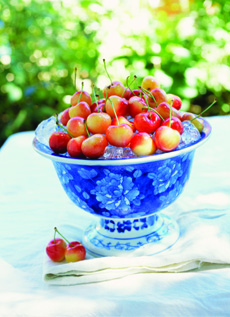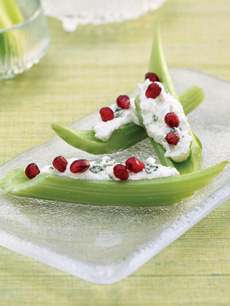|
Calories In Cherries
Cherries have a bad rap as a more “fattening” fruit. A single cherry contains about 5 calories; a cup of cherries with pitts, 87 calories; a cup of pitted cherries, 97 calories.
Cherries & Health
A growing number of Americans are drinking cherry juice 365 days a year. Tart red cherries contain significant levels of 17 different antioxidants, including anthocyanins and melatonin. Reports about cherry health benefits are promising. Antioxidants can help fight cell damage, which produces cancer and heart disease.
You’ll want to get guidance from your healthcare provider, but according to the Cherry Marketing Institute, to date no other fruit or vegetable has been found to have the pain-relieving properties of tart cherries.
Anthocyanin, one of nature’s most powerful antioxidants, is a natural Cox-2 inhibitor that can relieve the pain of arthritis, gout and possibly fibromyalgia for many people. Ongoing research at Michigan State University and the University of Texas at San Antonio shows that tart cherries contain enough anthocyanins to help relieve the pain of these diseases, and can be a safe alternative to drugs such as Vioxx and Celebrex for the relief of pain from arthritis.
CHERRY TRIVIA: Cherries have been eaten since prehistoric times. Wild cherry trees grew throughout Europe, western Asia and parts of northern Africa. The word cherry (cerise in French, cereza in Spanish) derives from a city in northern Turkey—Cerasus in the Roman Empire, Giresun today—from which the cherry was first exported to Europe.
|




